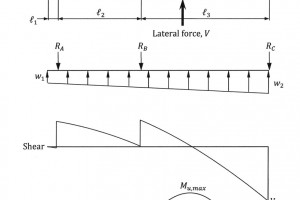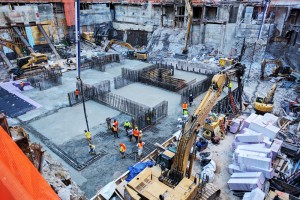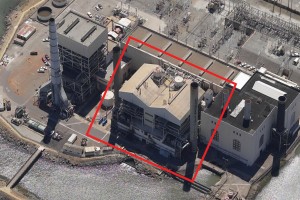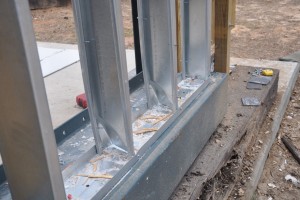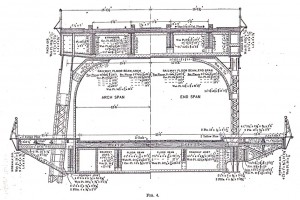In addition to supporting gravity loads, floor and roof systems in typical reinforced concrete buildings act as diaphragms which transfer the lateral forces to shear walls, frames, or other elements that make up the lateral force resisting system (LFRS). A three-dimensional analysis that considers the relative rigidities of the diaphragm and the elements of the LFRS provides the most accurate distribution of the forces in these components. A more straightforward analysis is possible when assumptions are made concerning the rigidity of a diaphragm. …
Review Category : Articles
There are many issues that arise when one places mass concrete, specifically as it relates to reinforced concrete elements in buildings. These elements, which most typically include reinforced mat foundations, pile caps, footings, piers, and transfer elements, differ from other reinforced structures such as dams and retaining walls due to high stresses, quantities of steel reinforcement, and the use of high strength concrete. Mass concrete element placement in buildings, therefore, presents unique challenges. …
An Investigation into Demolition of Complex Structures
Scarcity of buildable land, aging infrastructure, and changes in urban environments create an increasing demand for the demolition of existing structures. Often, demolition is planned and executed by a demolition contractor relying on experience and judgment for techniques and sequencing. Appropriate for some types of structures, such as small residential buildings with large offsets from surrounding structures, demolition plans not prepared by an engineer may not be appropriate for larger and more complex structures, where the consequences of unforeseen structural behavior during demolition can be dramatic or even fatal. …
Exterior Non-Load Bearing Cold-Formed Steel Walls
The DoD Unified Facilities Criteria (UFC) program developed documents to assist in determining the design basis threat and the desired level of protection of structures. Determining the level of protection to be achieved by a building against an explosive threat can be complicated and is based on analysis that considers variables such as the value of assets inside the building, likelihood of aggressor attack, aggressor tactics, and threat severity. …
Over the years, Leffert Buck (STRUCTURE, December 2010) replaced some of the wires, added anchorages, replaced the wood and iron suspended span, and finally changed the masonry towers with iron in Roebling’s Niagra Suspension Bridge (STRUCTURE, June 2016). The bridge, with its single track, outlived its usefulness by the early 1890s. Buck received the commission to build a new two-track bridge on the same alignment without interrupting traffic. His assistant in the calculations and his resident Engineer was Richard S. Buck, graduate from Rensselaer in 1887. The two Bucks would have an association lasting twenty years. …
Governing Law and Forum Selection Provisions: Part 3
Part 1 and 2 of this series (STRUCTURE, February and March 2018) provided an overview of both governing law provisions and forum and venue selection provisions. A governing law provision, also referred to as a choice of law provision, specifies that the law of a designated jurisdiction will govern disputes arising out of the agreement, regardless of where the dispute is adjudicated. …
Structural engineers have an unprecedented opportunity to contribute to green building certification. Within the green building practice, the U.S. Green Building Council’s (USGBC) Leadership in Energy and Environmental Design (LEED) rating system has set a precedent for green building standards and codes such as the IgCC, ICC 700, CALGreen and ASHRAE 189.1. The latest version of LEED v4, released in 2012, awards a total of 3 points for performing whole building life-cycle assessment and specifically limits the assessment to structure and enclosure to encourage participation from structural engineers. …
Out of all the training and development programs to choose from, mentoring can have the most significant impact on the careers of everyone involved. Be it a junior engineer fresh out of college or a senior engineer with 20 years of working experience, mentoring makes a difference. Unfortunately, very few companies have an official mentoring program available; it is an area that is often overlooked. …
Holmes Structures was an Outstanding Award winner for its Bay Area Metro Center project in the 2017 Annual Excellence in Structural Engineering Awards Program in the Category – Forensic/Renovation/Retrofit/Rehabilitation Structures over $20M. …
A recent internet meme titled “Trust Me, I’m An Engineer” shows a photo of a severely-damaged concrete column. To remedy gaping vertically-oriented cracks, someone wrapped the column with kitchen-grade cellophane. The caption reads, “Don’t worry; we’re safe – I fixed it.” …

